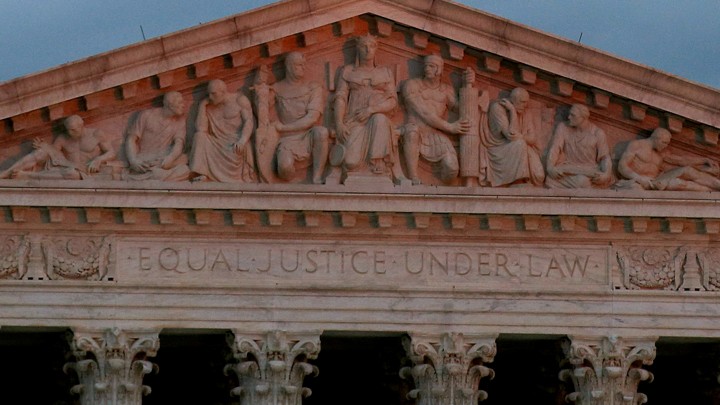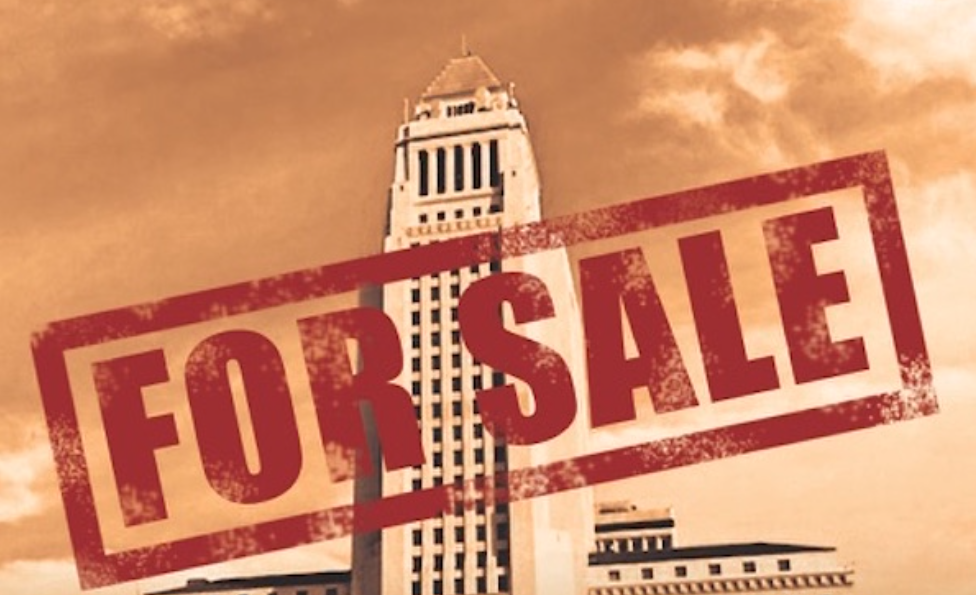Blanket Upzoning - A Blunt Instrument - Won’t Solve the Affordable Housing Crisis
Last April, TPR interviewed UCLA and London School of Economics Professor Michael Storper on how to square urbanism, density, and economic development. Over the past year, Storper, a Professor of Economic Geography whose last published book The Rise and Fall of Urban Economies: Lessons from San Francisco and Los Angeles, has continued his research on inequality caused by globalization and technology; and, on the impact of housing, zoning, and migration decisions by city-regions on addressing inequality. Rejoining TPR, Storper argues that the bulk of the claims of the trickle-down “housing-as-opportunity” school of thought are fundamentally flawed and lead to simplistic and misguided pubic policy recommendations. In light of the robust conversation around CA State Sen. Scott Wiener’s proposed SB 50, Storper notes that there is no clear evidence that local housing regulation is crucial for differences in home availability or affordability across cities, for inter-regional mobility, and that many have failed to fully consider the impacts of in-migration to economically prosperous cities.

“The idea that upzoning will cause housing affordability to trickle down within our metropolis, while also setting up Los Angeles and San Francisco as the new golden land for people in less prosperous regions, is just a lot to promise—and it’s based on a narrative of housing as opportunity that is deeply flawed. We have to be very cautious when we use a storyline like that to justify public policy." - Michael Storper
Professor, you recently released new research challenging what you term the “housing as opportunity” school of thought. What is the premise of that school of thought, and what do advocates of “blanket upzoning” to increase supply miss with respect to housing economics?
Michael Storper: The “housing as opportunity” school of thought is a consensus in mainstream housing economics that makes a very ambitious set of claims about the world. First, it claims that the housing crisis in our major prosperous metropolitan regions is principally due to restrictive zoning and regulations. It follows by arguing that that we can solve this crisis through widespread up-zoning, which it claims will increase the supply of housing in these prosperous regions, and that this overall supply increase will have a trickle-down effect by increasing affordability for lower income people and families. A novel argument then extends to bigger national picture, because this school of thought also claims that such up-zoning in prosperous regions can also solve the problems of less prosperous regions.
The background to this latter claim is that the split between prosperous metropolitan areas and more depressed areas—what many call the “left behind” regions—is greater than it has been for nearly a century. Many parts of the country are seeing lower incomes and fewer opportunities, yet people from those regions aren’t migrating to the prosperous regions as much as they have in the past.
The “housing as opportunity” school of thought says that this decline in migration is due to a lack of housing supply in big cities, such that people can’t find or afford housing in expensive metropolitan regions. And it says that upzoning in big cities would allow more migration in.
Thus, this theory works at two scales: the intra-metropolitan scale and the inter-metropolitan (or national) scale. At both levels, the issue is said to be affordability and the common solution is said to be upzoning.
So, what does this school of thought miss? Our paper proposes that it misses several things. For one, we don’t think that housing is the major reason that fewer people from “left behind” regions are moving into prosperous metropolitan regions. Instead, we think it’s because of jobs and skills.
The evidence for this is that some people are moving into metropolitan areas—specifically, highly skilled young people. Housing isn’t keeping them out. It’s changing how they are housed—they tend to crowd more people into a unit—but it’s not keeping them out. So, the idea that we’re going to create economic opportunity for people in Ohio, Kentucky, or North Dakota by building housing in LA is pretty unrealistic. It’s also a contradictory argument: if up-zoning were to be attract more of these domestic migrants into places like LA or San Francisco, we would largely negate any contribution to better or more affordable housing for those already here.
Our analysis shows that blanket up-zoning is likely to miss its affordability target, even without attracting in more people from left behind regions. Blanket upzoning is a blunt instrument, whereas people’s housing needs are diverse. Even if the up-zoning is aimed at, for example, transit-served corridors, it doesn’t mean that all such areas are going to attract housing investment. This is because, even with transit, people don’t live and work in the same neighborhoods, and there is no evidence that transit changes these patterns in any significant way. So, when we up-zone around transit corridors, for example, only some locations are likely to attract big increases in housing construction. These are areas with strong attractiveness. It will favor those who can pay the price of housing in high-demand areas—marginally improving the housing prospects for highly skilled people at the upper end of the income distribution.
What it’s not going to do is solve the housing crisis for the middle classes and lower-income people. Even with so-called affordability set-asides, the trickle down effect will be small and could even be negative in the highly-desirable areas, if the set-aside(in the range of 15-25% in current legislative proposals) is lower (or income thresh-holds higher) than the current pattern of lower-income, lower-cost housing in those areas compared to the new housing profile. This is just one example of the many unintended consequences that proponents of blanket upzoning don’t take into account, and that is why it will fail.
Elaborate on the research you rely upon to conclude that blanket upzoning will not solve the housing crisis for coastal California’s middle classes and lower-income people.
Our paper reviews the existing literature in urban economics and provides a variety of evidence on how migration impacts city housing prices. We looked at three dimensions of cities—land area, population migration, and changes in housing prices—and showed that there isn’t any consistent relationship among those three variables. Then, we used other data to show that the real factor driving growth in housing prices is the income distribution across cities.
Cities like LA, San Francisco, or anywhere else in coastal California have a strong economic base that attracts skilled people in occupations with high wages. They also have a large population with very low incomes. What drives housing prices up is the strength of the fundamental economic forces that causes the skilled to want to be in big metropolitan areas today. This force is much stronger than 30 years ago. The payoff for a skilled person to locating in a big city today (in terms of higher wages compared to locating in other places) is much bigger than in the past. That is why the skilled continue to crowd into LA and even the Bay Area, in spite of their high housing costs. It’s also why any increase in supply will mostly benefit them (in terms of better housing choices for them). That’s fine, but what it is unlikely to do is have a strong trickle-down effect, and up-zoning legislation is largely being sold on the affordability or trickle-down argument.
Professor, in a previous interview with The Planning Report, you noted that “blanket overrides of local planning and zoning laws to authorize density…would give us a combination of displacement and bad urbanism.” Does your new research confirm or conflict with that conclusion?
A recent paper by Yonah Freemark at MIT showed that upzoning in Chicago served to increase land values. We could anticipate that effect, because upzoning means that landowners can count on being able to construct more in the future. But what upzoning did not do in Chicago, and is not likely to do anywhere, is create incentives for housing construction in the areas where middle-class and lower-income people most need it for the prices at which they need it.
That’s the problem with blanket upzoning: It doesn’t actually require housing to be created for these groups. It just allows upzoning itself to be created wherever you want and allows for market speculation to dominate. The market will naturally respond best in areas with the greatest returns on upzoning—mostly places with dense, white-collar employment where high-income people will want to live to be closer to their jobs.
This is how blanket upzoning produces the consequence of displacement. Skilled people with high incomes—those who would benefit most from upzoning—are going to move into upzoned neighborhoods and crowd out the middle- and lower-income people who are living there. This displacement is exactly the opposite consequence of what the authors of upzoning bills claim they want to produce.
The consequence of bad urbanism is related to what I call the “Sao Paulo solution” or the “Mexico City solution”: allowing nonconforming high density to be built in areas with relatively low density. That’s exactly how a lot of cities in Latin America have urbanized—with towers or jumbled densities all over the place, chaotically shooting up all over the place next to single-family homes. Given the land-use patterns in Los Angeles, for example, blanket upzoning would likely give us the same kind of ugly incursions of bad urbanism, without the positive side of higher density, which is clustering, walk-ability, and lively streets. So many of LA’s neighborhoods were disfigured in the 1960s by the zoning that led to dingbat streets. Do we really want to repeat that?
In your opinion, are proposed laws/public policies that link the upzoning of neighborhoods with intra-city urban transportation corridors an inherently positive step toward achieving more housing affordability, as opposed to displacement, in California?
In this case, my concern is about the method, rather than the general goal. I do think that in the long run, we will see a new generation of people who are less reliant on cars, who want to live in denser communities, and who want to tap into better transit networks. And I think most people agree that that’s a desirable future. The question is: How do you go about doing it?
Transit-oriented upzoning can become a mechanism of displacement. The major area in LA where that is likely to happen is the Crenshaw corridor. Crenshaw community groups had worked out a plan for how they envisaged their communities to evolve—a plan that included greater density. Now, new development targeted to higher-income people is displacing those communities. What concern me are top-down approaches that dictate to a local community how to produce greater density and in exactly what ways.
Given your research on housing economics, what policy questions should be central to any new legislation seeking to address inequality and housing affordability?
The core debate in California housing policy is with people who think that untargeted upzoning is a lever that will increase supply in vast metropolitan areas and produce widespread affordability while somehow avoiding the problems of displacement and bad urbanism.
But affordability and supply are not the same thing. In big, mature metropolitan areas like Los Angeles, affordability has to be produced through active housing market policy. That means directly targeting affordability and access for every group and every mix of housing.
Bills like SB 827 and SB 50 are essentially about trickle-down economics. The logic is that by creating more aggregate supply, every part of the demand curve—every different group demanding housing—will somehow benefit. I don’t think there’s any evidence in favor of that proposition.
I agree that if what we want is more housing in a lot of different places, then we should create incentives for localities to build that housing—but we have to allow them to figure out how to do so in the way that best addresses their different constituencies. We should set general goals and allow communities to meet them in different ways, rather than imposing centralized solutions.
How do your UCLA colleagues in urban planning and housing affordability assess the housing legislation pending in the California State Legislature? Do they also reject as problematic the thesis that untargeted upzoning will increase supply and affordability without displacement and/or bad urbanism?
How do your UCLA colleagues in urban planning and housing affordability assess the housing legislation pending in the California State Legislature? Do they also reject as problematic the thesis that untargeted upzoning will increase supply and affordability without displacement and/or bad urbanism?
I think there is a wide variety of opinions. Everyone’s going to continue looking at all of the legislation that’s out there.
To me, housing is an area where the law of unintended consequences is most powerful. The idea that upzoning will cause housing affordability to trickle down within our metropolis, while also setting up Los Angeles and San Francisco as the new golden land for people in less prosperous regions, is just a lot to promise—and it’s based on a narrative of housing as opportunity that is deeply flawed. We have to be very cautious when we use a storyline like that to justify public policy.
You asserted in your last TPR interview that cities seeking to become economically competitive in the 21st century are “hamstrung by old rules.” What are the old rules or regulations that now hamstring the future prospects of cities?
The biggest problems are the tax systems that lead municipalities to be competitive with one another—including the Prop. 13 disaster that we’re still faced with—and all the fragmentation and fiscal disarrangement that every little city and every jurisdiction is fighting.
In closing, let’s pivot to the challenges of providing needed public housing and what policy lessons can be learned from other cities outside of the U.S.
I don’t think we talk enough about public housing. Public housing has a long and checkered history in the United States because it’s expensive, hard to maintain, and involves all kinds of problems of public administration and bureaucracy. It has a better history in other countries, and we might ask why.
Some cities—most notably London—are experimenting with reconstructing their public housing estates and allowing some market-rate housing to be built there. They’re going in the opposite direction of building private housing and including affordable housing in it. The reason this worked is that they included the residents, and the residents said, “We’ll make a deal. If you give us new and better public housing, and you let us participate in creating high-quality design, then we’re in.”
The key thing here is that the public sector keeps control of the land forever. A city, essentially, is its land—and land is the most valuable resource in a city. When the public sector controls land, it has the ability to weigh in on the future of the city. Now, as cities are changing, that asset—which will only become more valuable and less affordable to the public sector over time—isn’t being given away to the private sector, but is instead being transformed in response to social and economic forces.
There are intelligent ways to do these things that we need to start thinking about. Affordability has to be tackled directly; it’s not going to be created through aggregate supply and trickle-down.
See Article HERE



 JOSHUA ROBERTS / REUTERS
JOSHUA ROBERTS / REUTERS





